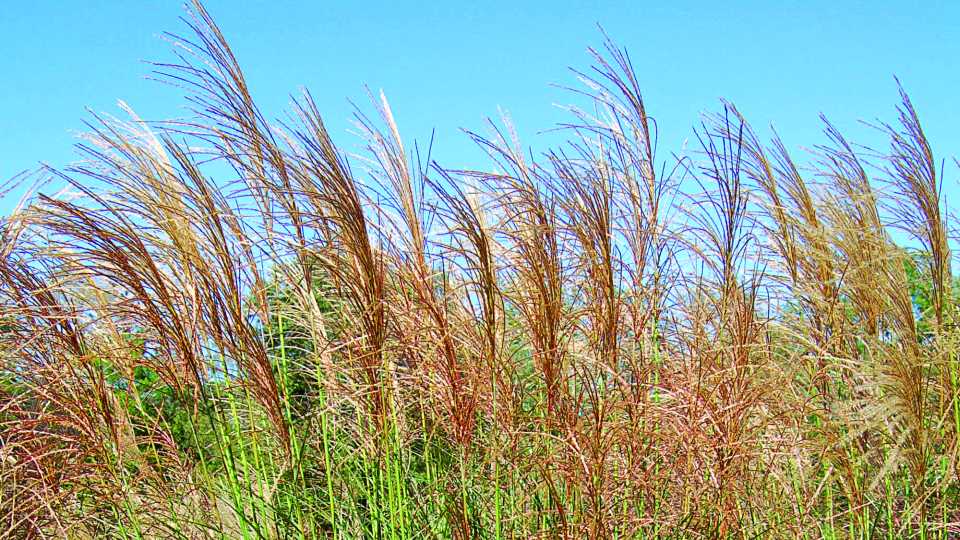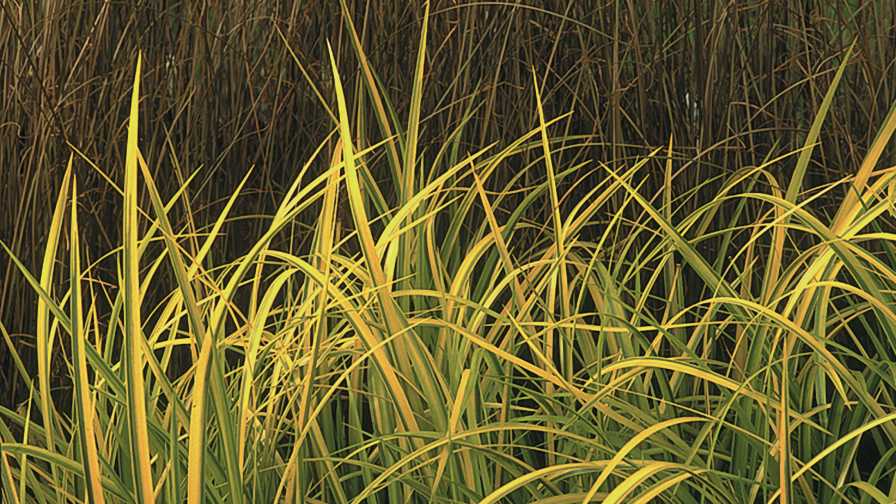How to Help Grow a Green Infrastructure
With the continued growth and popularity of ornamental grasses and native plants, this is an ideal time for commercial growers to capitalize on opportunities to supply landscapers and others for green infrastructure projects. So where do you start?
As this is an area Emerald Coast Growers has been tapped into for some time, we break them into three categories of opportunity: erosion control, lawn replacement, and water management.
Erosion Control
Native plants and ornamental grasses are an especially good fit for erosion control; for example, planting a large sweep with grass. Non-invasive Miscanthus are particularly good choices for these applications. Miscanthus ‘Scout’ makes a great alternative to ‘Gracillimus’ with its beautiful green tone. Slender green midribs accent it, and ‘Scout’ also offers spectacular fall color.
Also ideal for these installations: the Royal Collection of Pennisetums out of the University of Georgia. Headlined by ‘Prince,’ the hallmark of these grasses is varying shades of dark purple that intensify with sun and summer. The versatile collection offers selections in a wide variety of heights and tones with wide blades and upright habits. They’re great choices for their ornamental value and environmental consciousness.

Miscanthus ‘Scout’ puts on a wonderful display of fall color and is a good fit for erosion control.
Photo courtesy of Emerald Coast Growers
Pennisetum alopecuroides ‘Hush Puppy’ is another good choice for erosion control installations. Long-lasting pink plumes spray high over rounded mounds of slender foliage. This long-flowering infertile selection is a terrific size at only 30 inches, and it won’t reseed. Bonus: It maintains a bit more manicured look than some natives, while still delivering on ornamental value.
Panicums also make excellent selections for erosion control. Choose upright varieties or more arching cultivars, such as ‘Heavy Metal’ or ‘Shenandoah.’ Of the very hardy native-type grasses, they’re probably the easiest to culture. In addition, Panicum emerges a little earlier than others such as Schizachyrium and Andropogon.
Less hardy but no less of a good choice is pink muhly grass, or Muhlenbergia. For southern temperate and coastal climates especially, it is ideal. It produces a fabulous pink bloom for fall. In addition, we’re seeing a lot of action with Muhlys — new species coming out and more varieties. M. capillaris ‘Fast Forward’ is a great example and a favorite for these installations. It’s a little shorter and blooms significantly earlier than the species. Flowering begins in August (late July in warm climates). Also, M. reverchonii ‘Undaunted’ is hardier than others — up to Zone 5. It offers a similar look to M. capillaris, with a slightly different blade. Its showy, glistening flower spikes make a great see-through planting. Muhlys also come in white — M. lindheimeri, a Texas native, makes a striking choice with thick white plumes above fine, blue-green leaf blades.
If you’re doing a meadow of natives, you could even mix Panicum and Muhlenbergia together for an impressive and functional show.

Consider Acorus ‘Oborozuki’ for water control because it can dry out a little, but still takes a bit of moisture.
Photo courtesy of Emerald Coast Growers
Water Control
Here, you need natives that can really take both periods of low moisture and periods of heavy moisture — a challenge to say the least. We’re talking about areas near retention ponds, swales, and rain gardens. In heavy rain, these areas will fill up; in dry times, they’ll be empty. So you want something small that controls water, rain runoff, etc. Believe it or not, there are natives that can do that.
Carexes, or sedge grasses, are a good choice. The beauty of Carex is that the category offers a huge selection, from graceful clumping C. appalachica to starkly upright C. buchananii. Many offer attractive fall and winter color as well.
Panicum can be drought tolerant, but it can also be extensively moisture tolerant, so don’t discount it as a choice for water control. The same is true with Acorus. It can dry out a little, but still take some moisture. ‘A. Oborozuki’ and ‘A. Ogon’ are varieties to consider.
Juncus doesn’t take extra-dry conditions well, but in rain gardens that stay wet it would be very good. ‘Spiralis’ prefers moist to wet conditions, and its unique modern look adds pizzazz to any installation. For a more traditional upright look, ‘Fantastic Foliage Blue Arrows’ makes a great pond plant but also tolerates drought.

Sesleria autumnalis is a short, clump-forming groundcover that works well in mass plantings. It can handle sun and shade.
Photo courtesy of Emerald Coast Growers
Lawn Replacement
When it comes to lawn replacement, often the mind goes straight to sedges, but there are so many other choices with today’s cultivar development. Really anything could be a lawn replacement, if it is suited for the location, and it is something you don’t have to mow. You want plants that look groomed, well-maintained, stay low, and look contained.
Bouteloua gracilis prefers full sun and makes a great option for lawn replacement. This small North American native grass holds its burgundy-red inflorescens horizontally from its stems.
Sesleria autumnalis makes a great groundcover when mass planted. It stays short and close together in small clumps and can take the sun but also shade. Likewise, S. caerulea produces neat, dense tuffets of two-toned leaves.
In dry shade, Carex glauca ‘Blue Zinger’ also does quite well, and in the tradition of ferns, Astilbe, and the like. Deschampsia is another native that does well in these environments. It’s a bit bigger, but easy to culture. This grass prefers shade to part shade and provides some flexibility that others can’t.
Natives and ornamental grasses have come a long way in the 30-plus years we’ve been producing them. We’ve seen so much work in the category, with them gaining ornamental value as breeders select for new traits and features. These commercial and green infrastructure installations are really an opportunity for grasses and natives to shine, look fabulous, grow quickly and stand out for their low maintenance and high performance.









